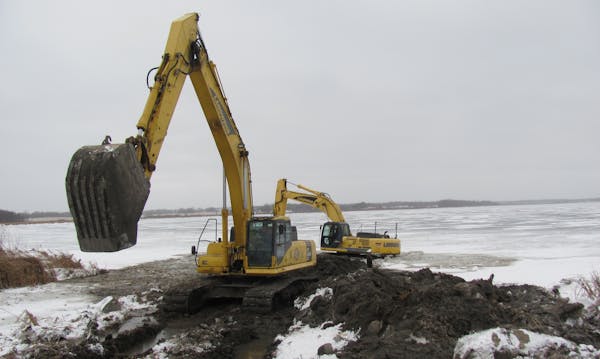Minnesota's moose population continues to fall, and wildlife officials said Tuesday that the latest count shows no sign that the state is reversing the puzzling decline that began a decade ago.
An aerial survey by the state Department of Natural Resources, released Tuesday, puts the number of moose in Minnesota at 3,450 — down about 20 percent from 2014 but well above the tally from 2013, the year the agency halted hunting of the animal.
Since 2006, the number of moose in Minnesota is down roughly 60 percent from a high of 8,840.
DNR wildlife research manager Lou Cornicelli cautioned that "all wildlife population surveys have inherent degrees of uncertainty. Long-term trend and population estimates are more informative and significant" than annual estimates, he said.
The DNR has conducted aerial moose population surveys in northeastern Minnesota since 1960. A spotter counts moose as a pilot flies a helicopter across 52 randomly selected plots of 13 square miles. Cornicelli described the latest survey conditions as "generally good … although there was much less snow compared to last year."
The DNR is conducting a separate moose mortality research project, which also provides insight into the species' future in Minnesota.
Some 11 percent of collared adult moose died this year, as compared to 21 percent last year, Cornicelli said. Adult mortality was slightly lower, but the number of calves that survive to their first year has also been low.
"This indicates the population will likely continue to decline in the foreseeable future," he said.
Researchers will radio-collar another 36 adult moose in the coming weeks and 50 newborn calves this spring in hopes of learning how to stop or slow the long-term population decline.
The DNR discontinued moose hunting in 2013, saying it would wait until the population could support a hunt.
A copy of the 2015 aerial survey is available online at www.mndnr.gov/moose.
Along with moose falling prey to wolves and bears, researchers also have pointed to several other causes that might explain the rapid decline in Minnesota. Brain worm, a parasite carried by deer, has expanded into moose territory.
Studies also have connected winter moose deaths to a warming climate. The huge animals are particularly sensitive to heat, and when it's hot in the summer, they tend to lie in cool damp places and pant instead of eating, which stops them from putting on enough fat to get through the winter.
Another factor could be winter ticks, which attach themselves in late fall, then feast on the moose throughout the winter. Large infestations, which can reach as many as 50,000 bugs on a single animal, can kill a moose.
Paul Walsh • 612-673-4482

FAFSA completions in Minnesota drop amid flawed efforts to update form

Wisconsin Republicans ignore governor's call to spend $125M to combat 'forever chemicals'

Man killed in Minnetonka by law enforcement started gun battle with deputies, BCA says

